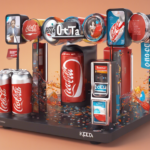The modern world is witnessing a pivotal shift towards sustainability, and the real estate industry is no exception. As urbanization accelerates and the need for resource-efficient practices intensifies, technology is emerging as a powerful tool for shaping sustainable residential and commercial real estate. This article delves into the intersection of technology and sustainable real estate, exploring how innovative solutions transform urban landscapes into environmentally conscious and energy-efficient hubs.
Smart Building Management Systems:
The management of buildings effectively is the cornerstone of sustainable real estate. Smart building management systems (BMS) use IoT devices and sensors to monitor and manage energy use in lighting, heating, cooling, and ventilation systems. Real-time operational optimization by these technologies lowers waste and boosts energy efficiency.
Energy Harvesting and Renewables:
Technology is unlocking the potential of renewable energy sources within the real estate sector. Solar panels, wind turbines, and kinetic energy systems are being integrated into buildings to harness and generate energy on-site. This reduces reliance on fossil fuels and returns excess energy to the grid.
Green infrastructure and urban planning: Sustainable real estate encompasses entire neighborhoods and cities and individual structures. Technology is used in urban planning and green infrastructure to incorporate green areas, bike lanes, and renewable energy sources. This develops sustainable ecosystems that are interrelated and advantageous to the locals and the environment.
Smart metering and monitoring: Smart metering enables residents to monitor their water and energy use in real time. This transparency promotes wise use and drives quick action in the event of wasteful patterns. Property managers can also optimize building systems with the help of data from smart meters.
Waste Management and Recycling:
Efficient waste management systems leverage technology to sort and process waste, facilitating recycling and reducing landfill contributions. Smart bins, waste-to-energy facilities, and waste-tracking apps show how technology is streamlining waste management in sustainable real estate projects.
Eco-friendly building materials and design strategies have emerged due to technological breakthroughs. Technology is transforming how buildings are built, reducing their detrimental impact on the environment and improving energy efficiency. Examples include sustainable insulation and biodegradable building materials.
Green certifications and data analytics: Sustainable real estate projects can be held to green credentials like LEED and BREEAM standards. Data on energy use, water use, indoor air quality, and other factors are collected and analyzed by technology to help obtain and maintain these certifications..
Smart Transportation Solutions:
Sustainable real estate promotes alternatives to traditional transportation methods. Technology supports the integration of electric vehicle charging stations, bike-sharing systems, and smart parking solutions, reducing the carbon footprint of both buildings and their occupants. If you live in hot places like real estate Fort Luaderdale, this can be especially beneficial.
Enhanced Indoor Environments:
Sustainable real estate prioritizes indoor air quality and occupant well-being. Smart sensors monitor air quality, humidity, and temperature, automatically adjusting building systems to create a healthier and more comfortable indoor environment.
Conclusion: The significance of sustainable real estate is growing increasingly clear as urbanization and city development continue. A new era in which buildings are more than simply physical constructions but instead inventive ecosystems that coexist peacefully with their surroundings is being ushered in by technology. Technology is paving the way for a cleaner future for the concrete jungle through smart building management, renewable energy integration, green infrastructure, and data-driven analytics. The fusion of technology and sustainable real estate not only lessens adverse environmental effects but also improves people’ quality of life while preserving the world for future generations.












